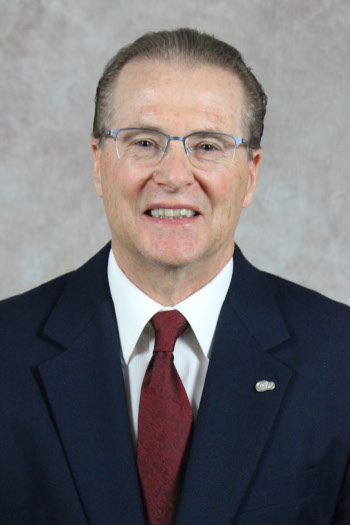Vita Plus Corporation
Growth through Shared Success
Exceptional Partnerships and Employee Engagement Cultivate Prosperity at Vita Plus Corporation
Employee stock ownership plans (ESOPs) have emerged as a beacon of collaborative enterprise in a landscape of continuously evolving corporate models.
Overcoming organizational hurdles like complex regulatory compliance, succession planning, and company valuation and appraisal is critical to success. Companies that manage this stand as testament to the potential of employee ownership, encouraging a culture of growth, active participation, and proudly earned wealth.
For Vita Plus, an ESOP agricultural company rooted in Wisconsin’s fertile grounds, the journey has been an odyssey of victories and innovative solutions, expertly navigating the unique challenges woven into its sector’s fabric.
This company has displayed the transformative power of shared ownership over the years and the unique resilient spirit that continues to propel it toward a flourishing future.
An Innovative Origin
Before it became the booming S-Corporation it is today, Vita Plus began its journey as a single farm building established in 1949 by Lyle Hill and Wally Henderson.
The change in trajectory came from a technical breakthrough when Hill discovered a better way to feed livestock. This marked the beginning of pre-mixes, an animal feed method far better than anything else used at the time.
As an agricultural concept, pre-mixes nourished farm animals more efficiently, thus yielding farmers far more profitable results.
As Hill and Henderson expanded their mixes to adapt to the different needs and scenarios of the agricultural scene, they ran into a few financial and supply chain-based problems within the company that needed to be addressed.
This triggered the creation of a profit-sharing program introduced in 1952, where, at the discretion of the Board of Directors, up to 25% of the company’s profits were allocated to all employees who met certain requirements.
In later years, this program became the precursor to the current employee stock ownership plan.
Setting the Foundation for Employee Engagement
The factor that transformed the initial profit-sharing program into the ESOP framework Vita Plus uses today was a strong drive to share the results and profits they generated with all employees.
The first step to achieving that result involved an ownership succession plan enacted in 1976. Senior management could buy out Lyle Hill’s shares (Wally Henderson’s shares had been previously redeemed).

Bob Tramburg
The second step was the institution of the 1986 employee stock ownership plan, made at the suggestion of Robert “Bob” Tramburg, then Treasurer, who later became President in 1987.
The ESOP structure allowed them to overcome the higher level of fiduciary responsibility of the profit-sharing plan that prevented the plan itself from owning stock in the company.
Next, based on Tramburg’s expert recommendation, the company began annual asset rebalancing. “Basically,” Tramburg explains, “we reshuffle the money every year so that everybody in the plan has the same percentage of stock.”
This practice was a massive deal, as it allowed the company to gain the leverage it needed to hire new people and get them plugged into the ESOP in an immediately substantial way. While other companies have followed, this remains a largely unique practice within the industry.
Lastly, the final component that catalyzed Vita Plus’ incredible success was securing key advisors to help them establish the ownership culture they sought to cement within the company ethos.
Firms like Menke & Associates, Boardman, Suhr, Curry, and Field, RSM US LLP, and Suby, Von Hayden & Associates were all among the names of advisors who guided Vita Plus. They provided counsel on anything from accounting to employee education of the ESOP to modifications of the ESOP structure.
The resulting profits of such precise counsel were shared at a steady 25%, a remnant percentage of the former profit-sharing plan that has rolled over into the current ESOP.
Over Three and a Half Decades of Achievement
The ensuing decades after Vita Plus laid its internal groundwork could only be described as an upward boom. In 1987, a year after the ESOP went live, the company recorded annual sales of $13 million.
In 2005, Vita Plus reported $100 million in sales, only to double those sales to $200 million in 2008. Four years later, in 2012, that number climbed to $300 million. Seasoned business people know that the higher the annual sales you reach, the harder it gets to push past a certain point.
Many companies experience what can only be described as a fiscal bottleneck, and for some companies, that can last a few years. A company’s strategies must yield exponential results within these years to break through that barrier.
Vita Plus managed to do what so many others struggled to achieve because just last year, as of September 30, 2022, the company’s revenue shot up to an astounding $450 million.
It’s safe to say that 2023’s report is eagerly awaited, especially by its principal shareholders, the employees. During the passing decades, Vita Plus employees certainly reaped massive rewards for their hard work.

Mark Miley
According to Chief Financial Officer Mark Miley, “We’ve had a tremendous return for our staff… the compounded [annual] rate of return [on the stock] is 23.81% over 36 years. If that’s not top decile performance, I don’t know what is,” Miley states, drawing attention to the fact that a core benefit of the company ESOP’s growth is the surplus of liquid assets it generates.
“We ended up with a lot of cash in our ESOP,” Miley states. Specifically, in fiscal year 2000, when Vita Plus became an S-Corp., the resulting influx of money–a great thing overall–initially presented a unique issue the company had to overcome.
However, Vita Plus soon found the solution to its problem in its employees.
The Rise of the ESOP Employee
As a legal requirement, an ESOP must be designed to invest “primarily” in qualifying employer securities, meaning at least 51% of its assets must be invested in said securities.
So, due to the surplus of liquid assets, the company found it difficult to keep 51% or more of its ESOP value invested in employer securities because its assets kept growing!
The solution came in the form of what Miley refers to as “mini-mergers,” a process by which the company strips money out of its ESOP and reinvests it elsewhere to get the total investment amount up to the 51% mark.
Its first mini-merger was done in May 2005, which moved 53% of all employee ESOP account balances to their 401Ks. From there, employees could invest the money in their 401Ks at their discretion. This strategy proved an immediate success, as they could self direct a significant portion of their ESOP dollars to meet their individual investment objectives Since then, the company has repeated this practice four additional times for a total amount of $15.75 million that was moved from the ESOP to employee 401Ks.
Over the years, thanks to these mini-mergers and the great returns Vita Plus sees on its stock after its annual appraisal process, 60%–65% of its earnings are distributed to the employee-owners as S-Corp distributions.
Regarding its appraisals, Vita Plus surely has its long-time partner, Sansome Street Appraisers, to thank, who have at times granted stock returns as high as 55.29%!
Tramburg chimes in, putting those numbers into practical terms, saying, “We’ve had 25 employees that are currently employed or retired that are millionaires coming out of the ESOP.”
These employees come from various backgrounds, from truck drivers to plant specialists to salespeople to office staff and salaried managers. Everyone involved in Vita Plus’ operation benefits from the ESOP’s tremendous performance.
A Plan of Partnership and Empowerment
The key to Vita Plus’ phenomenal triumphs lies in its relationships with its vendors, customers, and employees.
In addition to the vendor relationships already mentioned, several other vendors have and continue to provide outstanding value to the company.
Those key names include Clifton Larson Allen, an accounting firm, Bank of America, Stinson LLP (ESOP legal services), and the Newport Group (ESOP recordkeeping).

John Tramburg
Additionally, Vita Plus consistently educates and queries its newest employees on how the ESOP can better serve them. Vice President of Operations John Tramburg explains a typical process they go through to achieve this, saying, “We’re scheduled to visit a new facility next month to discuss our ESOP and our employee owners’ questions… to help them understand how their efforts contribute to the company. Mark and I have [several] meetings within our facilities throughout the year with employees and their spouses as well.”
The company values open dialogue among employees about how things should work, which speaks volumes about its long-term intentions.
Robert Tramburg clarifies, “Our goal, way beyond five years, is that our ESOP will own 100% of Vita Plus,” confirming a self-evident truth within the company’s collective conduct.
“That’s what we believe will continue to provide that point of difference… it’s our key people who are in contact with our customers… so, yes, our salespeople, truck drivers, plant personnel, and office staff. They’re all important, and that’s why working together with our ESOP makes sense,” Tramburg concludes.
For this agricultural giant, doing business isn’t rocket science; their process is profoundly simple: empower the employee to get out there and serve the customer.
And their results clearly speak for themselves.
AT A GLANCE
Vita Plus Corporation
What: An agricultural ESOP company thriving through collaborative employee ownership, exceptional partnerships, and a focus on employee empowerment.
Where: Wisconsin, USA
Website: www.vitaplus.com



